How to prune a yucca correctly?
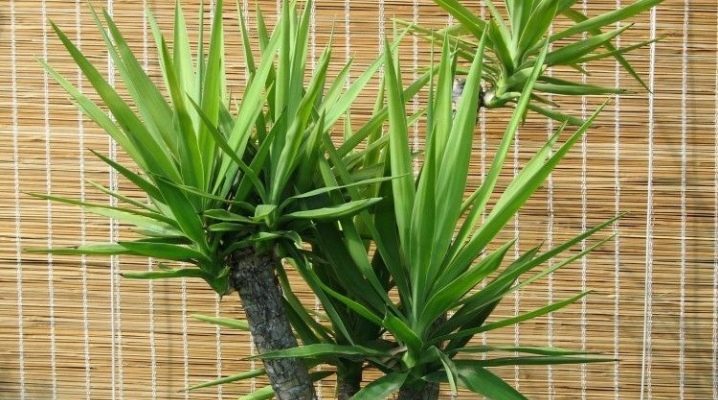
Yucca is a southern flower similar to a palm tree, reaching 2 meters in length, but specimens are found much higher. This plant looks gorgeous in the interior, especially in a large space, for example, in a hall or living room. Long green leaves fill the room with fresh tropical greenery and exoticism. The main thing is to correctly form the yucca and achieve the appearance of lateral processes.
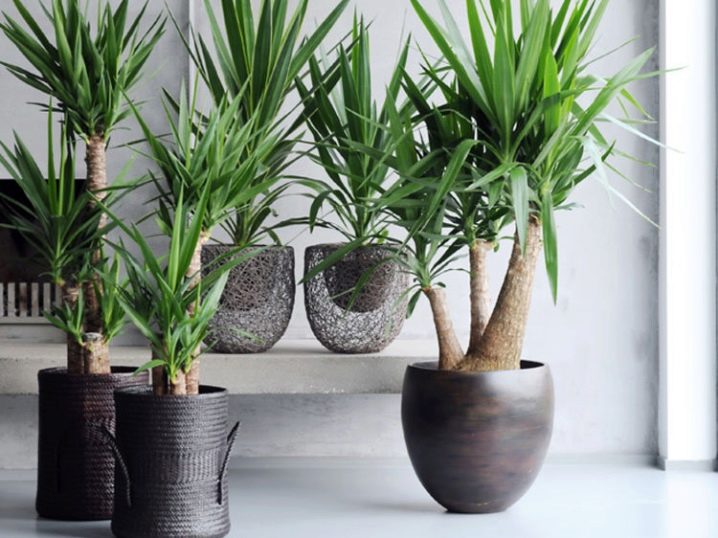
What is pruning for?
Pruning allows you to give the flower a beautiful shape. A young plant looks good in a pot, but as it grows, it stretches, and it lacks splendor: the trunk is thin, there are few green leaves. Therefore, the apex is cut off and the branching process is started in a similar way. The crown becomes richer, and the flower itself looks livelier.
Yucca grows quickly, at home the root system cannot always provide the crown with moisture and nutrients - when the stem is shortened, this problem disappears.
If the plant begins to die, then pruning is also carried out. This is how cuttings are obtained from which new specimens will grow. If the trunk has rotted, it is often possible to save the tops, which are used for further rooting.
Another reason for pruning is barrel curvature. A bent stem can break, which is very painful for a yucca. In addition, there is a risk that the pot will simply fall under the weight of the leaves. Therefore, it is better to cut the crooked trunk and allow the flower to grow new shoots.
The plant is also cut off when it is damaged by a pest or fungus. This happens more often with yucca growing outdoors. In order to save the flower, all of its damaged parts are removed and the plant is treated with chemicals. Leaves that have been cut are immediately disposed of so that the pest does not spread throughout the garden.
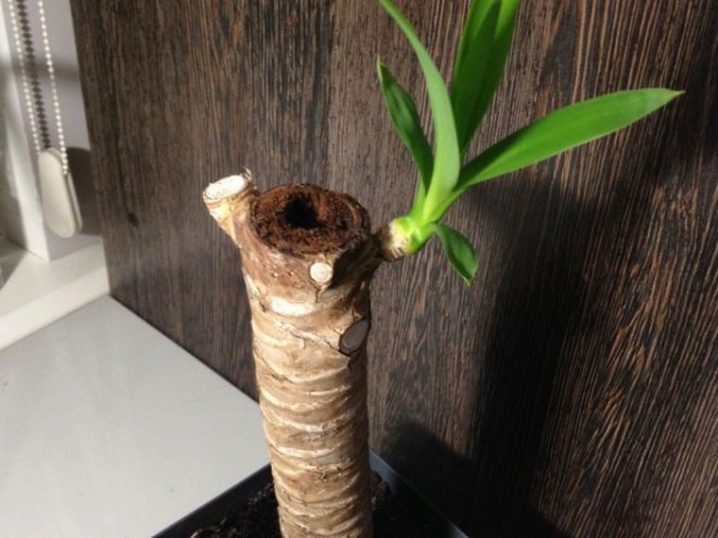
When to trim?
It is necessary to prune when the flower has become too large - more than 50 cm. When deciding on this, it should be borne in mind that after removing the top, the trunk will no longer grow. Therefore, it is better to wait until its diameter is 4–6 cm. A thicker stump not only looks more beautiful, but can also hold several thick caps of leaves.
Timing is important. For yucca pruning, the end of February or the beginning of March is suitable. During this period, the plant has not yet emerged from dormancy, but is already ready for rapid spring growth. April and the following months are not suitable, as an active growing season begins, so carrying out serious manipulations can ruin the flower.
In winter, the yucca needs peace. You can not carry out any procedures, you should reduce watering and keep the plant cool: the temperature in the room should be 10-15 degrees. So the flower will gain energy and strength for the subsequent growth and ejection of shoots: after pruning, new shoots will not be long in coming and will form a lush crown in the future.
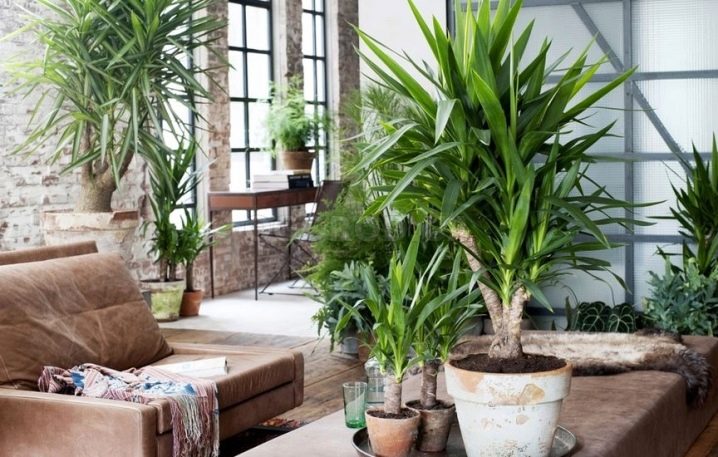
How to do it?
2 days before the procedure, the yucca is watered abundantly, this will help the plant to stock up on water and reduce stress. The necessary equipment should be prepared in advance:
- secateurs or sharp knife;
- alcohol;
- paraffin wax or any garden putty;
- anti-stress preparations for the plant, for example, "Epin";
- Activated carbon;
- drainage, earth and container for rooting the cut off top.
Tools should be well sharpened and cleaned with alcohol.This will make it possible to make a high-quality cut and exclude decay of the trunk.
The procedure is carried out carefully. You can significantly reduce the stress on the flower if you follow the step-by-step instructions carefully.
- Determine the location of the cut. The length of the hemp should be between 25-50 cm, this size is sufficient for the formation of young shoots.
- Holding the crown with your hand, cut it. This must be done clearly, in one motion, completely cutting off the trunk and preventing it from breaking off. If the stem is broken, the vascular system of the plant will be disrupted.
- The cut site should dry naturally. To do this, leave the plant alone for 2 hours.
- Treat the cut with garden putty or paraffin. This will protect the yucca from moisture loss and create a barrier against the entry of harmful bacteria.
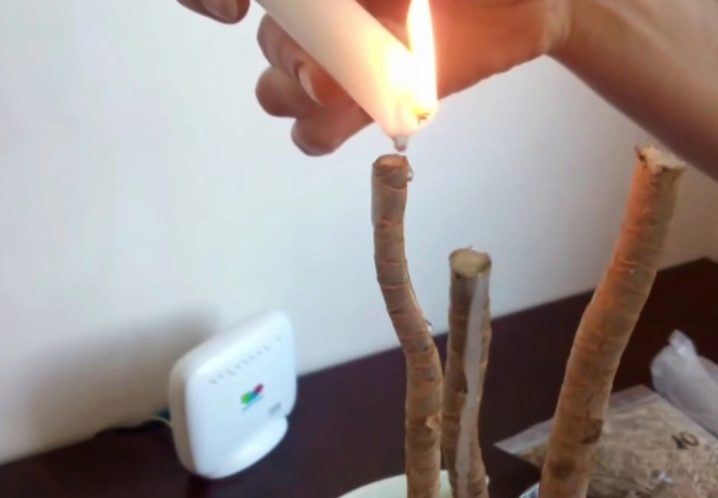
Autumn for winter
Pruning indoor yucca in autumn and winter is done only in case of her illness. If the tops are removed, a healthy plant can be grown from them. But the remaining stump will no longer give new shoots. Therefore, if everything is in order with the flower, it is better to wait for early spring, but for now provide the plant with rest so that it gains strength for subsequent growth.
It's another matter if the yucca grows in the garden, in this case it must be prepared for winter. In the fall, about 4 weeks before frost, all yellowed leaves, dry shoots and peduncles are cut off. The plant is sprayed with fungicides and its leaves are tied into a bunch. The soil is mulched with peat, the garden palm is covered with spruce branches or dead wood.
After flowering
At home, yucca rarely blooms. But if you create favorable conditions for her, then in the summer beautiful white flowers, similar to bells, can appear. For this to happen, the plant needs a lot of light, good feeding and rest during the winter. Before blooming, the yucca throws out an arrow on which buds are formed.
After flowering, a bare stem remains, which does not look very aesthetically pleasing and spoils the appearance of the plant. Therefore, when the last petals fly around, and the peduncle itself begins to dry, it can be cut off. This is done with a sharp pruner at a slight angle to the very base. Also remove the bottom line of leaves, which usually wilt and turn yellow.
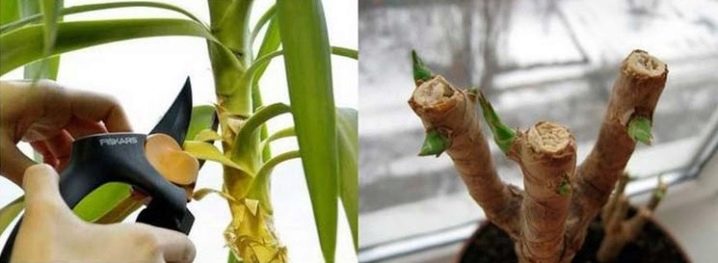
For side shoots
Pruning is done in order to get 2-3 lateral shoots. But it often happens that out of three swollen buds, only one gives a full-fledged healthy shoot, the rest dry up and die off. As a result, the palm tree is crowned with a lone green crown on the side, and despite the efforts made, the plant does not look lush. Therefore, it is important to stimulate the growth of new shoots in time.
Epin is a good growth stimulant; it is used to treat the trunk immediately after trimming. Another excellent remedy is cytokinin paste, which is used to lubricate the scales on the trunk, under which the kidneys sleep. It is enough to do this once.
It is worth noting that it is forbidden to use cytokinin paste for young palms, it is only suitable for lignified plants.
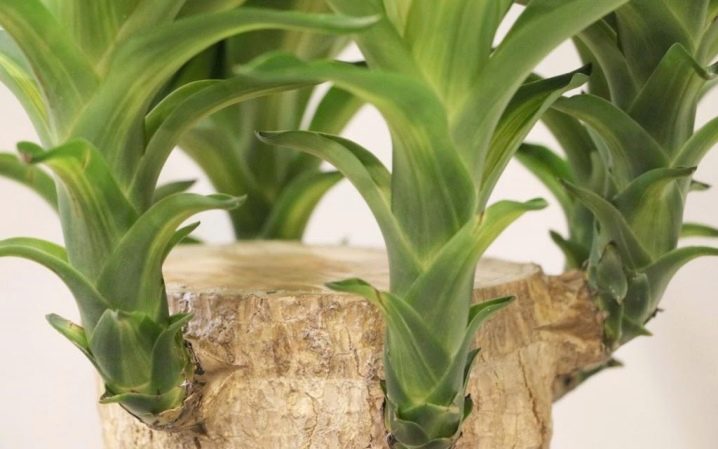
On cuttings
Yucca propagates well by cuttings. For this, the cut off part of the plant is divided into cuttings of 25–30 cm each. Healthy processes are selected: without yellowing and signs of rot. The cut points are immediately processed with activated carbon, which must first be crushed into powder. Dry the cuttings for 1-2 hours, for this they should simply be left alone, then planted in a nutrient substrate for rooting.
The root system begins to form in a month and a half. It is interesting to observe this process if a young yucca is planted in a transparent glass pot. Some growers advise to first hold the cuttings in water for 24 hours. The water should be boiled, at room temperature, you can add any root former, for example, "Epin" or "Zircon". Dilute the drugs according to the instructions. Cuttings prepared in this way will root better and grow healthy.
A great way to give the yucca a bushy shape is to plant the stalk in the same pot with the remaining healthy stump after pruning.
So the flower will grow more green caps, it will look sprawling and lush. It is worth considering that the pot then must have sufficient width and depth, because now 2 plants will live in it, their roots need space.
With multiple barrels
If the yucca has several trunks, then the pruning is carried out gradually. You cannot do this at one time, as the plant will experience severe stress and may die. It is best to remove one stem each year. This will give the flower a beautiful shape and eliminate the risk of plant death.
When trunks are not cut at the same time, the branches will grow to different lengths. The shoots that appear in the first year will be slightly longer than those that grew after the second stem was cut. Because of this slight difference in the size of the side branches, the yucca will look like a lush bush. Using this knowledge, you can beautifully shape a flower at your discretion, doing pruning annually or every 2 years.
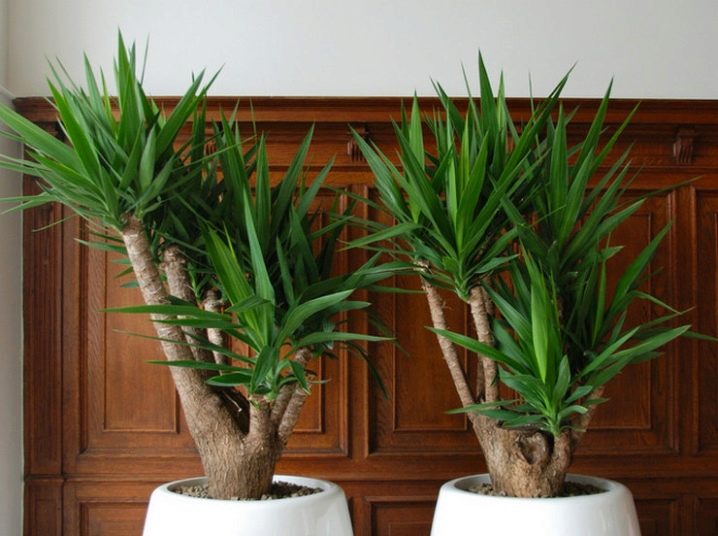
Care after the procedure
After carrying out all the manipulations, the yucca are provided with peace. It is left at room temperature in a slightly darkened place for 14 days. It is necessary to avoid direct sunlight, at this time they are detrimental to the plant.
The first watering is done a week after pruning, the water temperature should be comfortable: 20-25 degrees.
After about a month or a little earlier, several buds hatch. When they germinate, it will be necessary to pinch off the excess shoots. This is done so that the trunk can hold the grown crowns, which become quite massive after a few years. If the stem diameter is less than 5 cm, 2 or 3 shoots are left, 4 shoots are allowed to grow on a thicker trunk. Next, the yucca is looked after as usual:
- watering in the spring-summer period is carried out once a week, in winter - once every 3 weeks;
- from March to August they feed the plant, any fertilizer for succulents is suitable;
- provide the flower with a lot of light, especially in spring;
- yucca loves fresh air, so in summer it is recommended to take it out to the balcony.
In general, this plant is unpretentious and tolerates pruning well. If everything is done correctly, then new shoots will appear on the sides of the trunk, which in the future will turn into a beautiful rosette of bright green leaves. Yucca will acquire a bushy shape and will look good in the interior of an apartment or office.
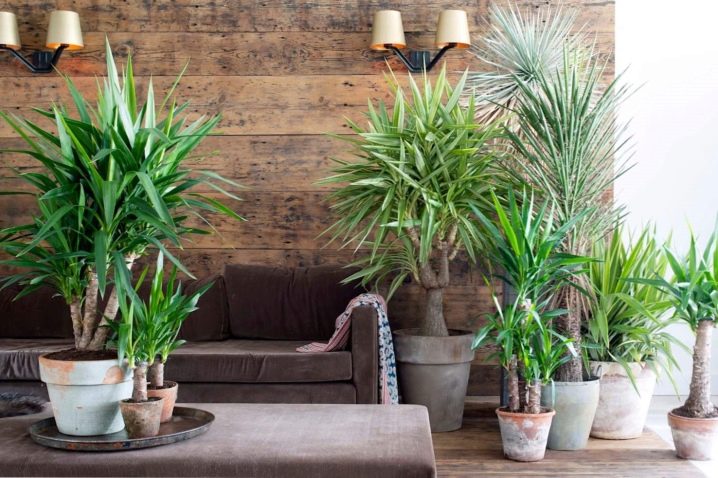






























The comment was sent successfully.